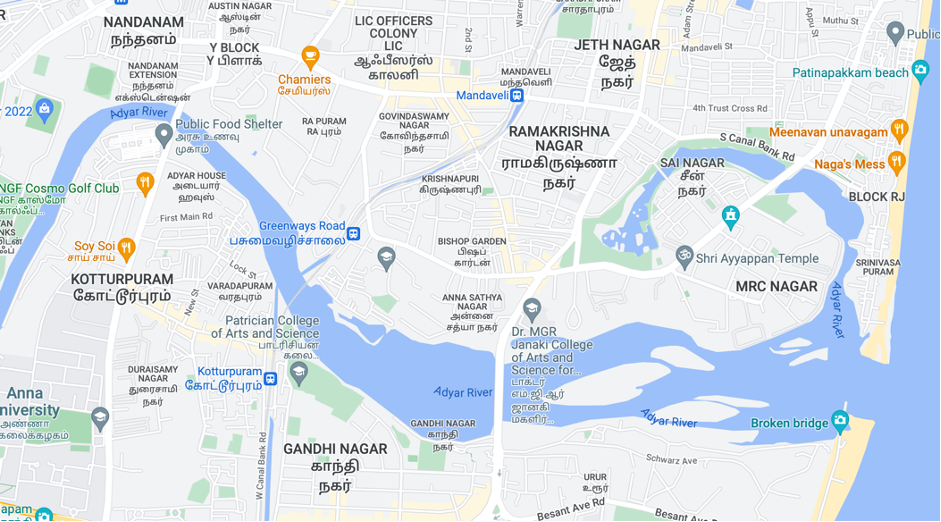SCCN Blogs
Reversing the Trend
Rejuvenation of Adyar river
INTRODUCTION:
As we peep into the history of life on the Earth for billions of years, we see that water was the origin of life. Life emerged underwater. Thousands of years back, the human settlements and their lifestyles developed and revolved around the rivers. Priority was to fulfil water and food needs. Rivers became lifelines and remained so till now. The practices of worshipping rivers in India have its roots in the fact that rivers shaped the culture and progressive development of civilization. Many civilizations were simply wiped out due to the drying of rivers. Healthy management of rivers is the key to a healthy civilization.
In today's modern, urbanized & digitalized era, we are disconnected from the rivers. River tributary flowing through a city is unfortunately seen as a great opportunity to dispose of and discharge solid waste and sewage. Overlooking the fact that rivers not only provide water but associated fertile land, biodiversity and supply of food. The neglected and damaged rivers are veins for humans' vegetation, forests around the rivers are the lungs.
To reestablish the lost connections with the river, the "River Rejuvenation" project was undertaken by me and my 3 group members under the mentorship of Dr Sujata Karve, Prof Rahul Nawle and Prof Sonali Rajwade from the Environmental Architecture department of Dr Bhanuben Nanavati College of Architecture. The project was part of the holistic approach to making Chennai Climate Resilient as part of 100 Resilient Cities – Rockefeller Foundation.
ABOUT ADYAR RIVER:
The Adyar river was predominately used for agriculture. Unlike in its historic use, the river now encounters shocks and threats from unplanned development. It was observed in the study area that river water was undergoing tremendous pressure of growing Water Hyacinths, due to excessive fertilizers used by farmers and drained into the river, untreated sewage coming from the human activities The health of the river had critically affected the existing biodiversity in Riverian area. The river banks have encroached that had resulted in the loss of riparian buffers to store and hold the floodwaters. The Dumping of construction and demolition waste into rivers has a huge impact on natural water flows
INTERVENTIONS
To recommit to improving the health of the Adyar River:
Awareness:
From the site observations, it was derived that the citizens of Chennai had lost their linkages and more importantly engagement with the Adyar river. The concept of the interventions and re-engagement was developed. It was focused on developing the Adyar riverfront to bridge the gap between the river and humans in such a way that citizens start respecting the river and understand the need to restore the river and its ecosystem. The proposed actions were intended to inspire the citizens so that they collaboratively recommit to improving the health of the river.
Specific Actions:
- Reengagement:
The stretch along the river was transformed into a recreational belt. The recreational area was designed to welcome all age groups. Amenities included a jogging track, playgrounds, gardens, outdoor benches etc.
- Shelter for Biodiversity:
A series of native tree species was planned along the periphery of the river to act as a buffer. The native species will provide food and shelter to wildlife promoting biodiversity. The proposed buffer will serve as sequestration ground contributing to the carbon emissions reduction strategy.
- Treating the untreated:
To improve the water quality and provide a thriving environment for lost biodiversity, floating wetland islands were created and released into the tributary. The cultivation of duckweeds at the sewage discharge outlets was also proposed to bioremediate the wastewater. The proposed duckweeds were also a rich source of food for fish.
Ar. Durga Kamat
IGBC AP Associate, LEED GA
Project Executive - Smart Campus Cloud Network
When you subscribe to the blog, we will send you an e-mail when there are new updates on the site so you wouldn't miss them.






Comments